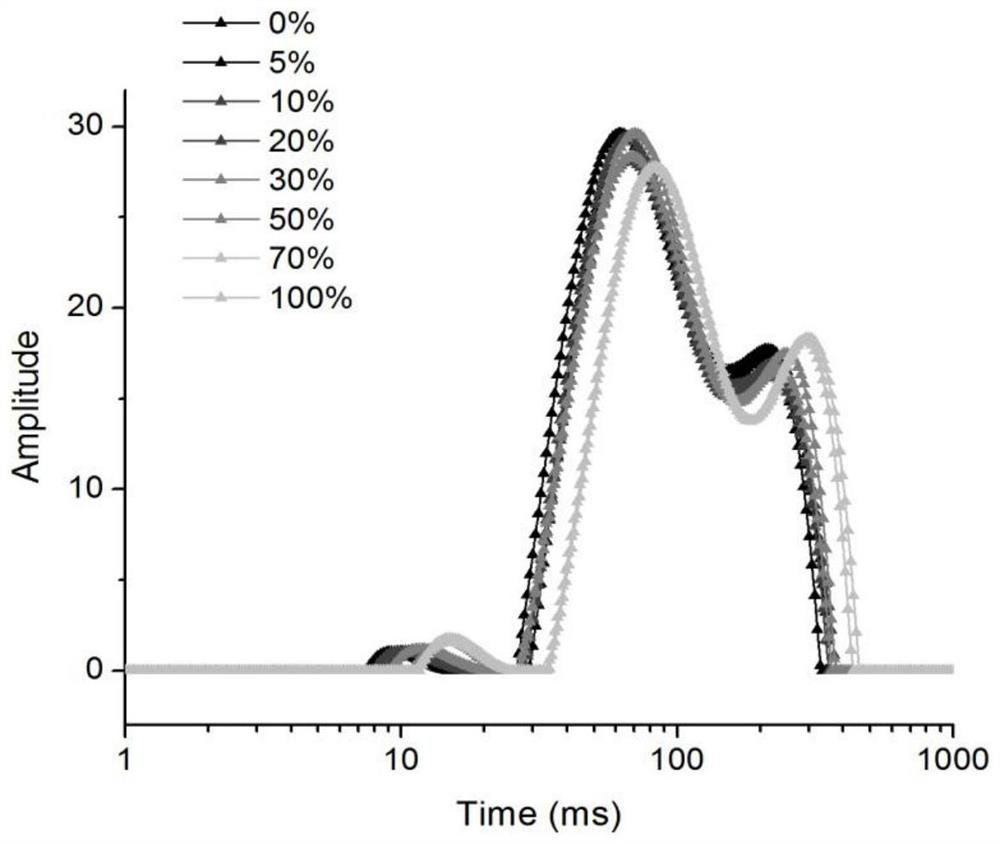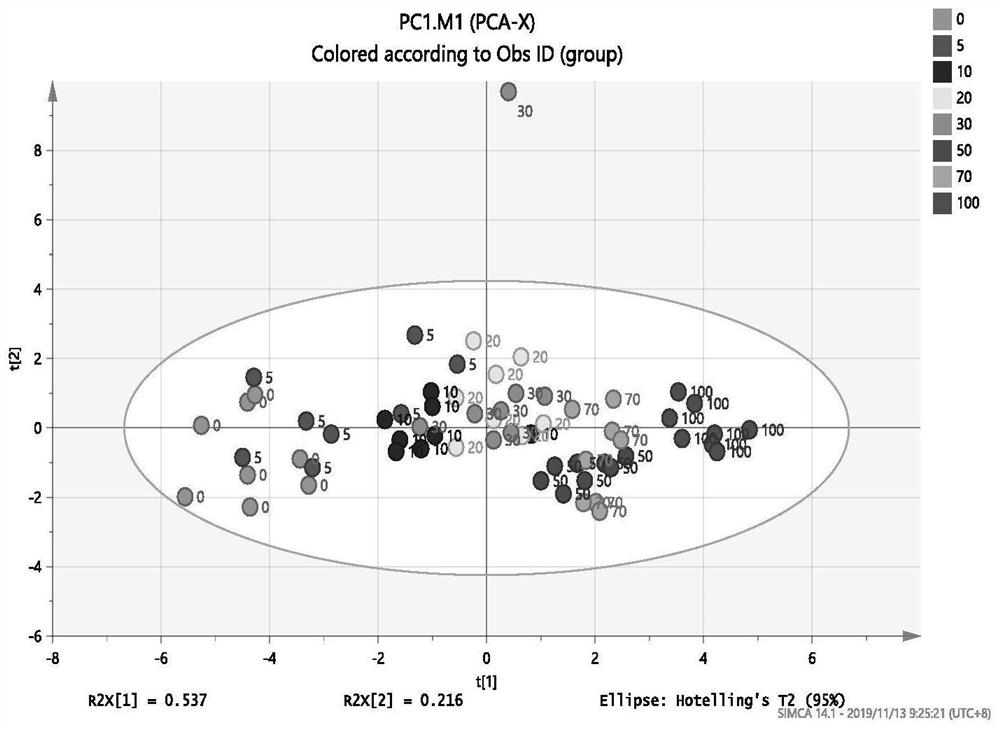A method for rapid screening of adulterated waste oil in edible oil using low-field nuclear magnetic resonance
A low-field nuclear magnetic resonance and waste oil technology, which is applied in the field of adulterated waste oil, can solve the problems of difficult identification of waste oil, multi-signature signal mining and insufficient characterization methods, and achieve simple and easy-to-understand operation, fast and non-destructive qualitative and quantitative detection , the effect of a wide range of application prospects
- Summary
- Abstract
- Description
- Claims
- Application Information
AI Technical Summary
Problems solved by technology
Method used
Image
Examples
Embodiment Construction
[0028] The present invention will be described in detail below in conjunction with the accompanying drawings and specific embodiments.
[0029] In this embodiment, the oil samples to be tested are Arowana peanut oil adulterated with different concentrations (5%, 10%, 20%, 30%, 50%, 70%) of waste oil, as well as pure waste oil and Arowana peanut oil samples.
[0030] The main purpose of this experiment is: ① test the signal difference of pure peanut oil, waste oil and adulterated oil samples with different concentrations under low-field nuclear magnetic resonance, and obtain the regression equation; sample for identification.
[0031] The specific operation steps of this embodiment are as follows:
[0032] (1) Instrument calibration: first turn on the NMR instrument, turn on the magnet temperature switch, preheat for 24 hours, keep the magnet temperature constant at 32°C for magnetic field homogenization calibration, put the standard oil sample into the magnet coil, and set th...
PUM
 Login to View More
Login to View More Abstract
Description
Claims
Application Information
 Login to View More
Login to View More - R&D
- Intellectual Property
- Life Sciences
- Materials
- Tech Scout
- Unparalleled Data Quality
- Higher Quality Content
- 60% Fewer Hallucinations
Browse by: Latest US Patents, China's latest patents, Technical Efficacy Thesaurus, Application Domain, Technology Topic, Popular Technical Reports.
© 2025 PatSnap. All rights reserved.Legal|Privacy policy|Modern Slavery Act Transparency Statement|Sitemap|About US| Contact US: help@patsnap.com



